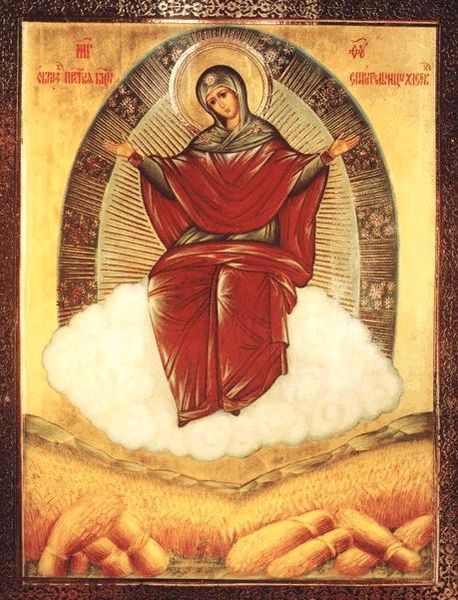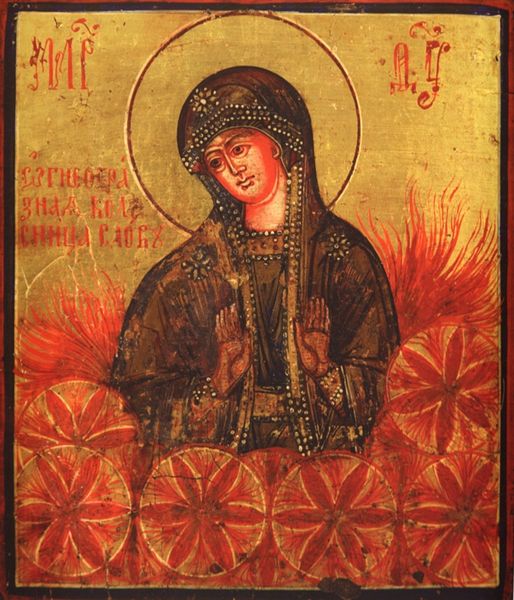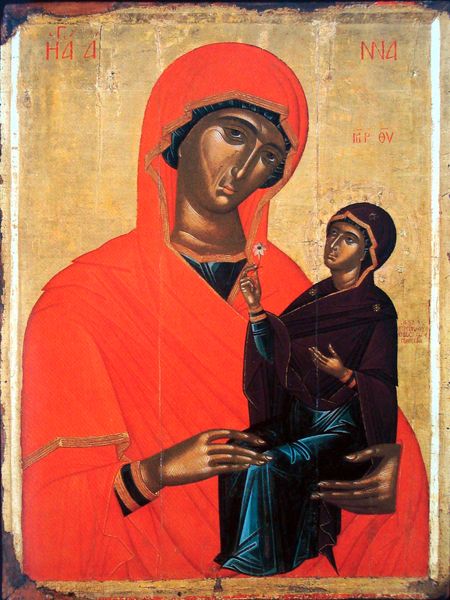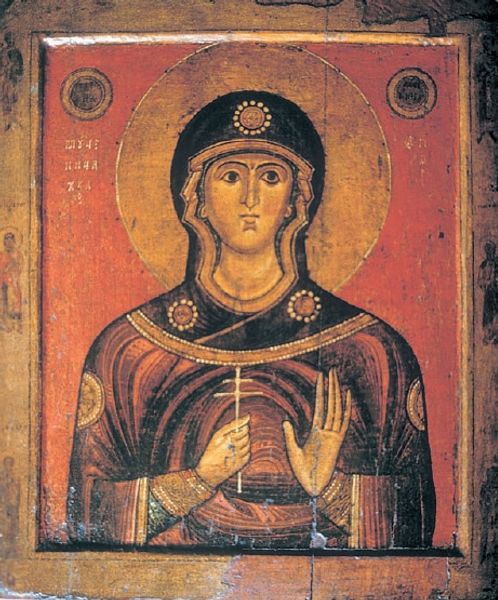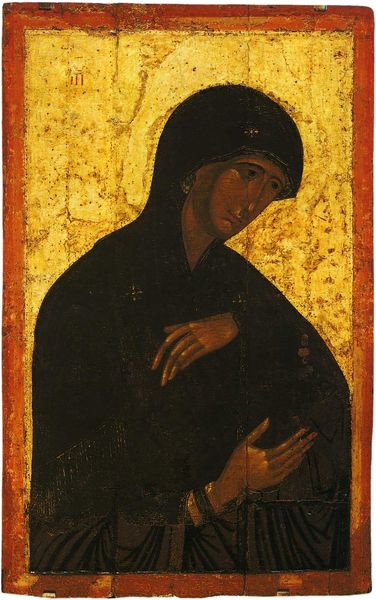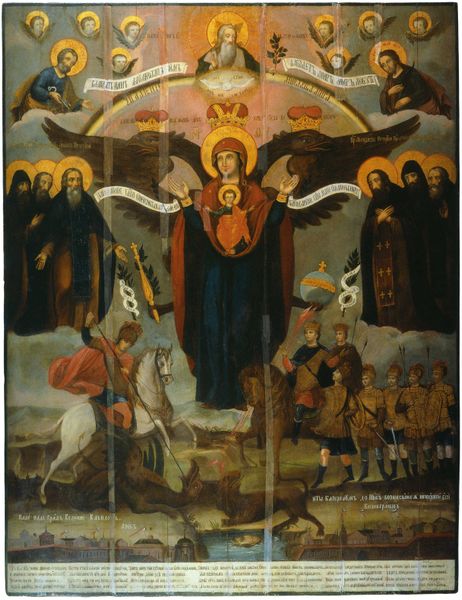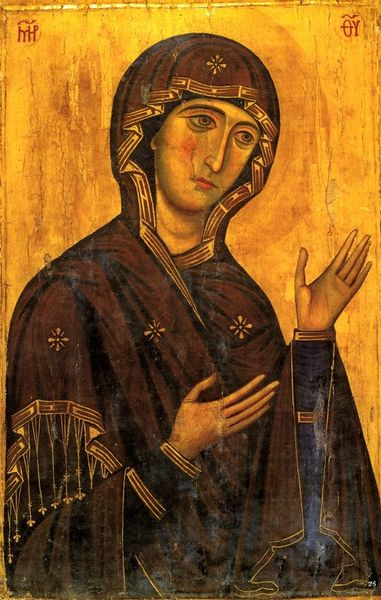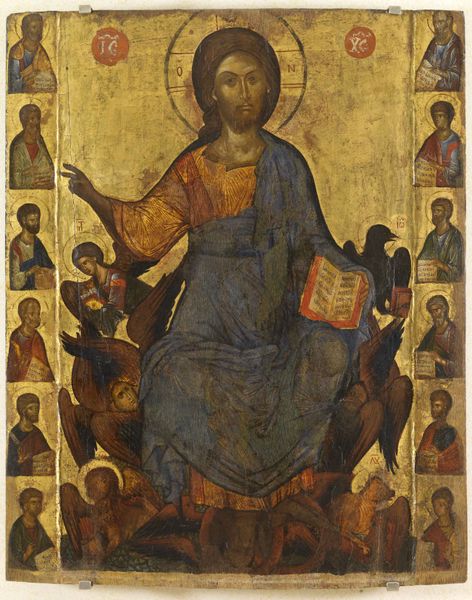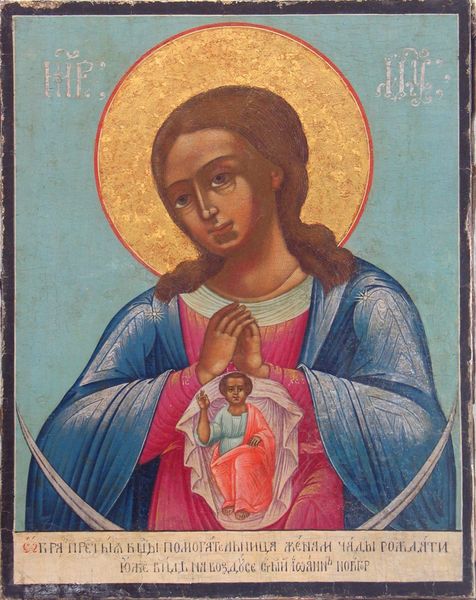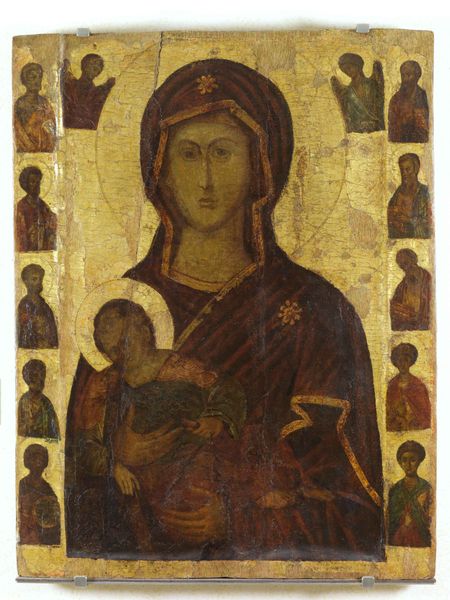
tempera, painting
#
byzantine-art
#
medieval
#
allegory
#
narrative-art
#
tempera
#
painting
#
figuration
#
oil painting
#
miniature
Copyright: Orthodox Icons,Fair Use
Curator: Editor: This is "The Grower of Crops," a tempera painting from 1900, done in the style of Orthodox Icons. The way the figure floats above the wheat feels both spiritual and very grounded. How do you interpret this work, particularly concerning the materials and the context of its creation? Curator: From a materialist perspective, I find this piece intriguing. Consider the tempera itself – pigment painstakingly mixed, traditionally by monastic communities. This isn't just about aesthetics; it speaks to labor, devotion, and the communal act of production. Notice, too, the Byzantine artistic traditions. These weren't created in a vacuum, but developed over centuries by particular workshops in very specific material conditions. Editor: So, the value isn’t just in the image itself, but also in the physical effort and traditions that shaped it. But what about its connection to agriculture? How does that materiality influence the overall meaning? Curator: Precisely! The depiction of wheat elevates it beyond mere decoration. Wheat becomes symbolic not only of sustenance, but of the very means of production, the social realities of labor, harvest, and the potential hardships and joys of agricultural life. Ask yourself, what does it mean to depict the divine in such close proximity to the working life of the people? Editor: I see. It links the spiritual and the material world, grounding the divine in everyday experience. The choice of tempera also speaks volumes, adding to that context you explained. Curator: Indeed. Understanding how it was made helps unlock its significance. Next time you see a work of art, think: What went into this, and what social stories does its creation tell? Editor: Definitely! I'll look at art with new eyes now, thinking about process and context as much as the finished image. Thanks for your insight!
Comments
No comments
Be the first to comment and join the conversation on the ultimate creative platform.
